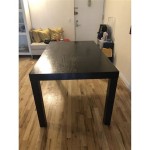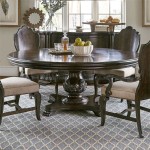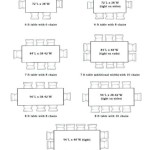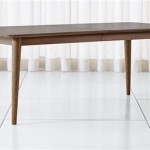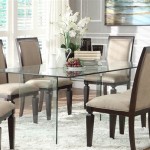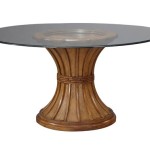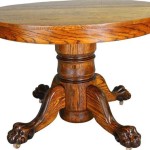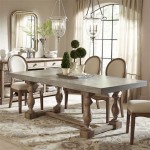Custom Glass for Dining Tables: A Comprehensive Guide
Dining tables serve as central gathering points in homes, facilitating meals, conversations, and social interactions. While various materials can be used for dining table surfaces, glass offers a unique combination of aesthetic appeal, durability, and ease of maintenance. Custom glass, in particular, allows homeowners to tailor their dining table to specific design preferences, spatial constraints, and functional requirements. This article provides a comprehensive overview of custom glass options for dining tables, exploring the benefits, considerations, and types of glass available.
The decision to opt for custom glass for a dining table often stems from a desire to create a distinctive and personalized space. Mass-produced dining tables may not always align with the overall design scheme of a room, or they may not fit perfectly within the available space. Custom glass offers the flexibility to address these limitations, enabling individuals to achieve a seamless integration of the dining table with the surrounding environment.
The use of glass in dining table design provides a sense of openness and light. The transparency of glass allows natural light to penetrate through the surface, enhancing the brightness of the room. It also creates the illusion of more space, making it an ideal choice for smaller dining areas. Furthermore, glass can complement a wide range of interior design styles, from modern and minimalist to classic and traditional.
Benefits of Custom Glass Dining Tables
There are several compelling reasons to choose custom glass for a dining table. These benefits extend beyond mere aesthetics and encompass practical considerations related to functionality and longevity.
One primary advantage is the ability to achieve precise dimensions. Standard dining tables come in predefined sizes, which may not be suitable for every dining room. Custom glass allows for the creation of a tabletop that perfectly fits the available space, maximizing seating capacity and optimizing the flow of traffic. This is particularly beneficial for irregularly shaped rooms or those with architectural constraints.
Another significant benefit is the design flexibility afforded by custom glass. Individuals can choose the shape, thickness, edge profile, and finish of the glass to create a table that aligns with their specific aesthetic preferences. The shape can range from traditional rectangular and circular designs to more unconventional shapes like oval, square, or even freeform designs. The thickness of the glass affects its structural integrity and visual impact. Thicker glass tends to convey a sense of solidity and robustness, while thinner glass offers a more delicate and refined appearance. The edge profile, such as a bevelled, rounded, or flat polish, can further enhance the overall design.
Durability is another crucial factor. While glass may appear fragile, tempered glass, which is commonly used for dining tables, is significantly stronger than ordinary glass. The tempering process involves heating the glass to a high temperature and then rapidly cooling it, creating a compressive stress layer on the surface. This makes the glass more resistant to impact and thermal stress. In the event of breakage, tempered glass shatters into small, relatively harmless fragments, reducing the risk of serious injury.
Ease of cleaning and maintenance is an additional advantage. Glass surfaces are non-porous, which means they do not absorb spills or stains. A simple wipe with a damp cloth is usually sufficient to remove food residue or other messes. Unlike wood or other materials, glass does not require special polishes or treatments to maintain its appearance. This makes it a practical choice for busy households.
Considerations When Choosing Custom Glass
While custom glass offers numerous benefits, there are several factors to consider before making a purchase. These considerations include glass type, thickness, edge profile, and the base or support structure.
The type of glass is a crucial consideration. Tempered glass is the most common and recommended choice for dining tables due to its strength and safety characteristics. However, other options include laminated glass and annealed glass. Laminated glass consists of two or more layers of glass bonded together with an interlayer of polyvinyl butyral (PVB). This type of glass is highly resistant to impact and shattering, and it can provide enhanced sound insulation. Annealed glass, also known as standard glass, is not tempered and is more prone to breakage. It is generally not recommended for dining tables unless it is used in conjunction with a supporting frame.
Glass thickness is another important factor that affects the structural integrity and aesthetic appeal of the table. The appropriate thickness depends on the size and shape of the tabletop, as well as the type of support structure. Generally, thicker glass is recommended for larger tabletops or those with minimal support. Common thicknesses for dining table glass range from 1/4 inch to 3/4 inch (6mm to 19mm). Consulting with a glass specialist is recommended to determine the optimal thickness for a specific design.
The edge profile of the glass can significantly impact the overall aesthetic and safety of the table. Common edge profiles include flat polished, bevelled, pencil-rounded, and ogee edges. Flat polished edges provide a clean and modern look, while bevelled edges add a touch of elegance. Pencil-rounded edges are slightly rounded for a softer feel, and ogee edges have a more decorative and ornate appearance. The choice of edge profile is largely a matter of personal preference, but it is important to ensure that the edges are smooth and free of sharp corners to prevent injury.
Finally, the base or support structure of the dining table must be carefully considered. The base must be strong enough to support the weight of the glass tabletop and any items placed on it. Common base materials include wood, metal, and stone. The style of the base should complement the design of the glass tabletop and the overall interior design scheme. In some cases, the glass tabletop may be supported by legs or pedestals, while in other cases, it may be attached to a solid base. The method of attachment should be secure and reliable to prevent the tabletop from shifting or detaching.
Types of Glass Finishes for Dining Tables
Beyond the fundamental aspects of glass type and thickness, the finish applied to the glass can dramatically alter its appearance and functionality. Various finishes are available, each offering distinct characteristics and aesthetic qualities.
Clear glass is the most common and versatile option. It allows for maximum light transmission and provides an unobstructed view of the base or surrounding area. Clear glass is suitable for a wide range of design styles, from modern to traditional. However, it may show fingerprints and smudges more readily than other types of glass.
Frosted glass, also known as etched glass, has a textured surface that diffuses light and provides a degree of privacy. The frosting can be applied to the entire surface or in specific patterns or designs. Frosted glass is a good choice for dining tables where a more subtle and understated look is desired. It also helps to conceal fingerprints and smudges.
Tinted glass is available in a variety of colors, such as bronze, grey, and blue. Tinted glass can add a touch of warmth, sophistication, or drama to a dining room. The level of tint can be adjusted to control the amount of light transmission. Darker tints may reduce glare and provide more privacy, while lighter tints offer a more subtle effect.
Back-painted glass is glass that has been painted on the back side with a durable coating. This type of glass offers a solid, opaque color that can be customized to match any design scheme. Back-painted glass is easy to clean and maintain, and it provides a sleek and modern look. It is particularly well-suited for contemporary dining spaces.
Textured glass features a raised or patterned surface that adds visual interest and tactile appeal. The textures can range from subtle ripples to more pronounced geometric designs. Textured glass can be used to create a unique and eye-catching dining table. It also helps to conceal fingerprints and smudges.
Selecting the appropriate custom glass for a dining table requires careful consideration of the intended function, aesthetic preferences, and budget. Consulting with a qualified glass professional can provide valuable guidance in navigating the available options and ensuring a successful outcome. By understanding the benefits, considerations, and types of glass available, individuals can create a dining table that is both beautiful and functional, enhancing the overall dining experience.

Custom Glass Dining Table Top Cut To Size A E Glazing

Glass Dinning Tables With Custom Etched Designs Sans Soucie Art

Custom Glass Dining Table Designs By Cbd

Tempered Tabletop Glass Recommended Frame Maker Singapore

Custom Glass Table Tops Why So Popular

Skokie Glass Tables Table Top Dining

Clear Glass Dining Table Top Cut To Size A E Glazing

Custom Glass Table Tops By Sans Soucie Art Studios

Custom Glass Table Tops Choose From Our Color Options

The 5 Reasons It S Completely Worth To Get A Custom Glass Tabletop

